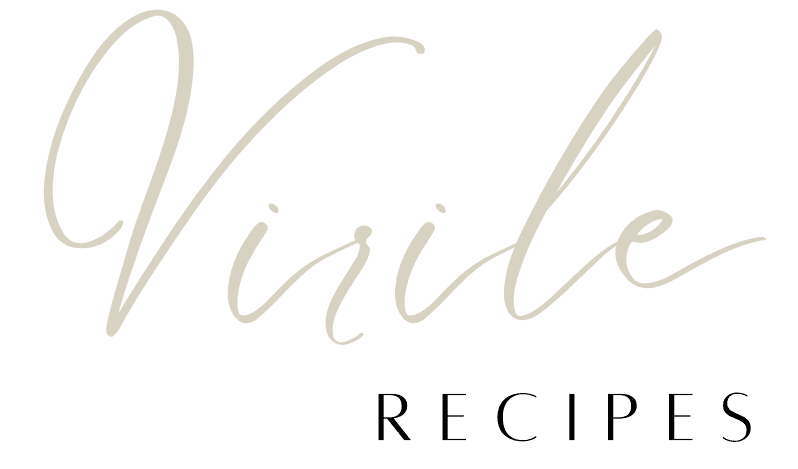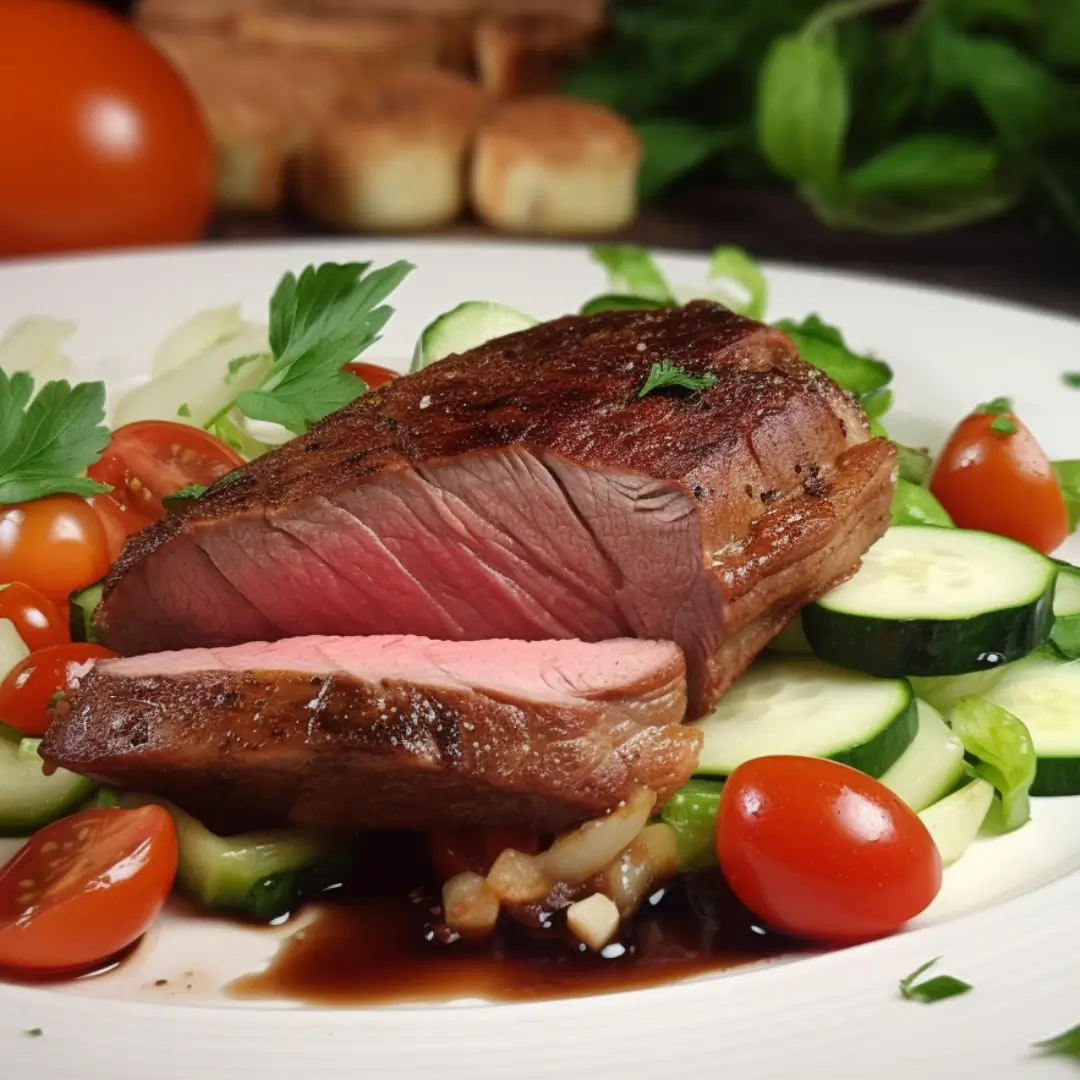Content
Duck breast recipes have a bit of a reputation. You hear “duck” and immediately think of white tablecloths, a server with a wine list, and a price tag that stings a little. But here’s the thing—you can absolutely make duck at home without any of that stress or drama. And trust me, it’s way easier than it sounds.
We’re talking juicy meat, crispy golden skin, and a cook time of under 30 minutes. Yep, even on a Tuesday night. Whether you’re feeding the family, impressing a date, or just treating yourself (yes, you deserve that), duck is your new go-to when chicken feels boring and steak feels too heavy.
The beauty of duck breast recipes is in their simplicity. You don’t need a bunch of fancy ingredients or a culinary degree—just a hot pan, a sharp knife, and a few tips I’ll show you in a sec. Want to go the extra mile? We’ll even toss in a simple red wine reduction sauce that tastes like you worked magic.
And hey, if you’re into red meats too, you might like this guide on how to cook tender cuts of red meat like duck breast and beef medallions. The techniques are surprisingly similar!
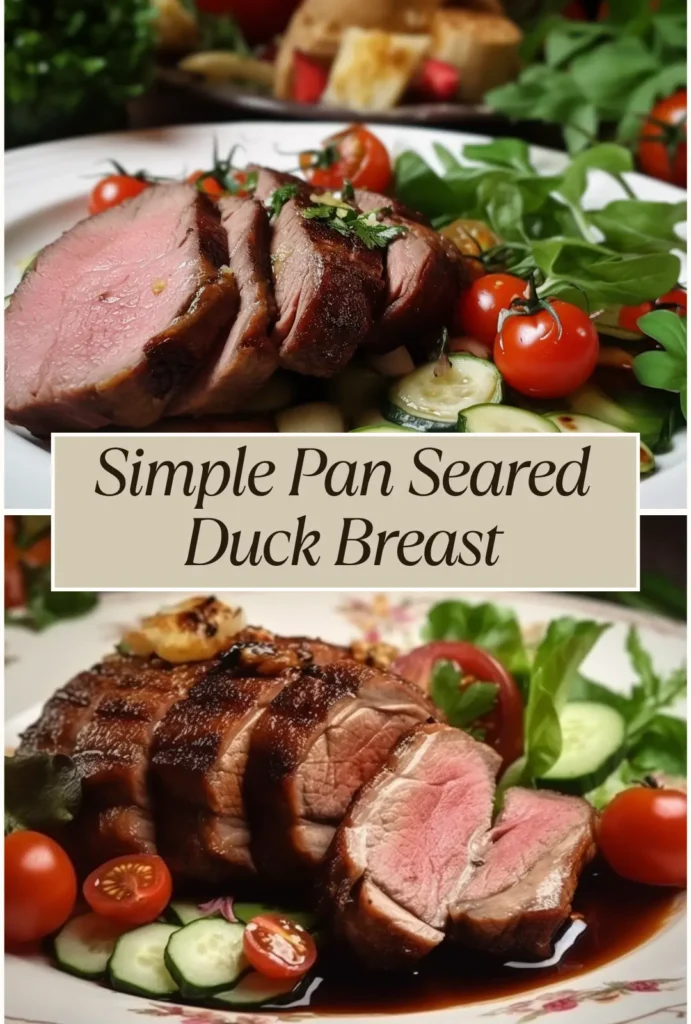
Ready to dive in? Let’s get cooking.
Duck Breast Recipes: Tips You Need to Know
Before we jump into the pan, let’s cover the basics. Great duck breast recipes start with a few simple techniques that make all the difference. Don’t worry—this is the kind of advice you only need to learn once.
Here’s the good stuff:
- Bring it to room temp
Cold duck + hot pan = uneven cooking. Let it chill (literally un-chill) on the counter for 20–30 minutes before cooking. - Start with a cold pan
Sounds wrong, but it’s totally right. Placing duck skin-side down in a cold pan lets the fat render out slowly—crispy skin, zero burn. - Cook low and slow
Medium-low heat is your friend here. Give the fat time to melt off and the skin time to crisp up. - Don’t add extra fat
Duck has plenty of its own. Trust it. Your skillet will be swimming in golden goodness soon enough. - Spoon off excess fat
Too much in the pan and you’ll start frying instead of crisping. Save that liquid gold for roasting potatoes or veggies later. - Score the skin
This helps render the fat and gives you that crispy bite everyone’s obsessed with (we’ll walk you through it next).
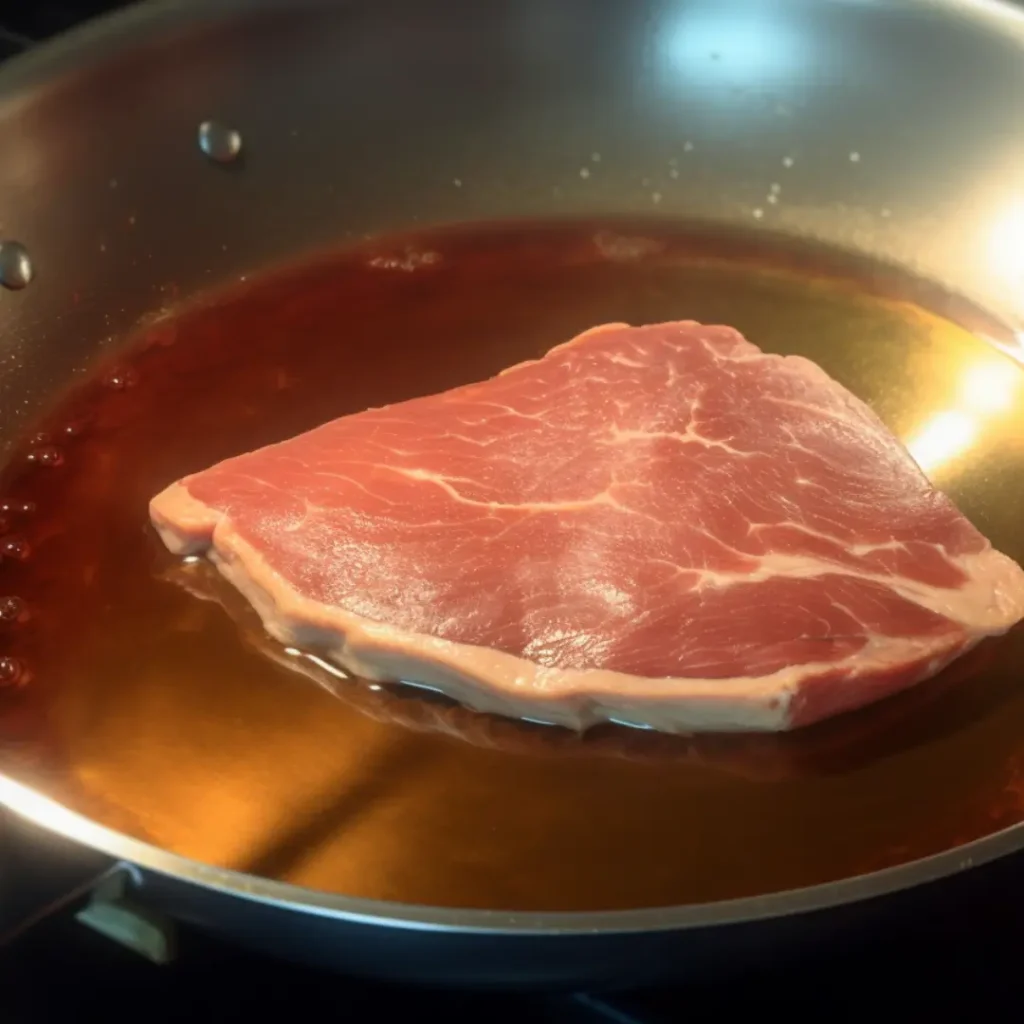
Looking to perfect your pan skills even more? Check out our tips on searing techniques for proteins like duck and rockfish. It’s the same concept, different flavor vibe.
Next up: how to score that duck like a pro.
Duck Breast Recipes: How to Score Like a Pro
If you want your duck breast recipes to hit that sweet spot—crispy skin, juicy meat—this one step is non-negotiable: scoring the skin.
Sounds intense? It’s actually super easy. Just don’t overthink it (or over-cut it). Here’s exactly how to do it:
- Place the duck skin-side up on a clean cutting board. Make sure it’s dry—use paper towels if you need to.
- Grab a sharp knife. This part matters. Dull knives tear, and we want clean slices.
- Score the skin in diagonal lines, about ½ inch apart. You’re aiming to slice through the skin and fat—but stop before you hit the meat. Think of it like slicing through the top layer of a puffy jacket without poking your arm.
- Turn the duck 90 degrees and repeat to make a diamond pattern. This not only looks fancy—it helps the fat render more evenly and the skin crisp up beautifully.
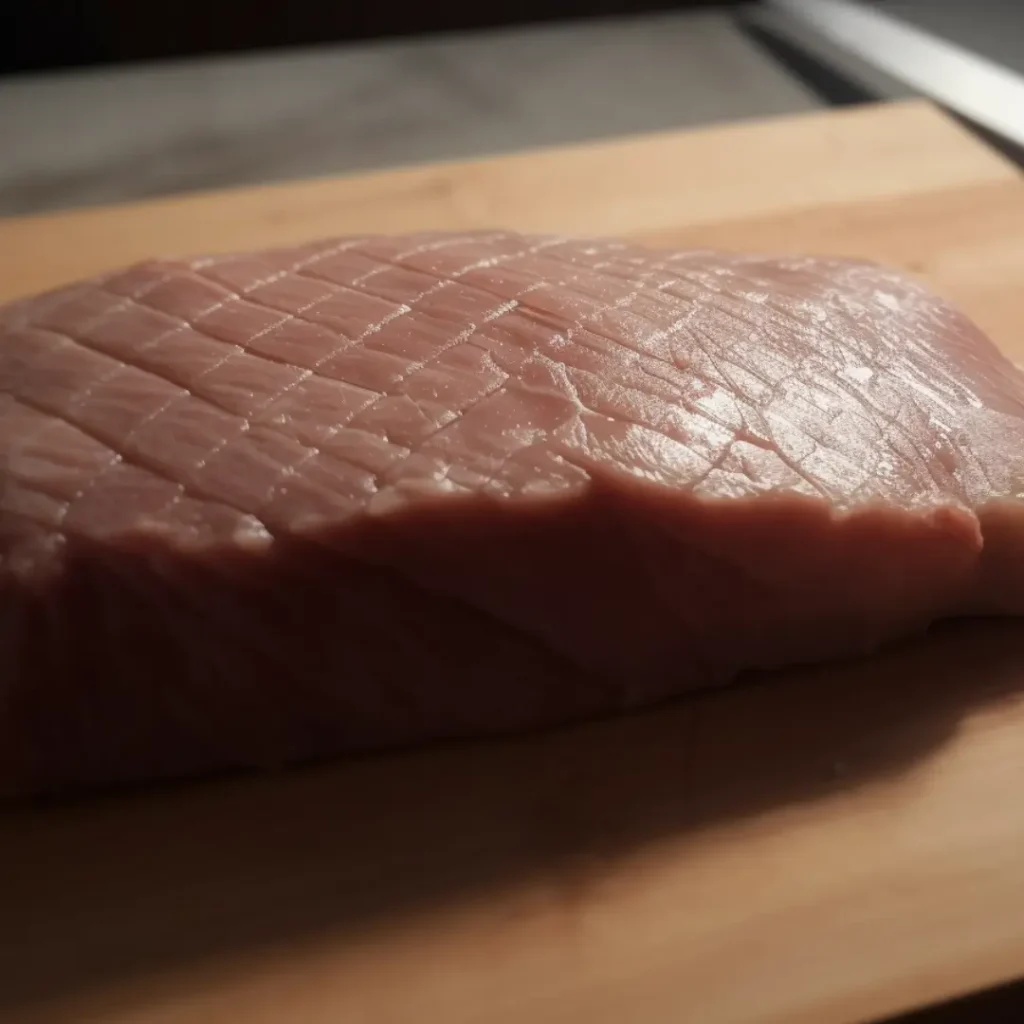
Bonus tip: Even if you’re working with skinless duck breast recipes, you can still lightly score the surface to help marinades soak in faster and cook the meat more evenly.
Ready to cook? In the next step, we’re going straight to the skillet—and the real fun begins.
Duck Breast Recipes: How to Cook It Just Right
Alright, your duck is scored and ready. Now let’s talk about the cooking part—this is where duck breast recipes either shine… or get sad and chewy. But not on our watch.
Here’s your foolproof method for pan-seared duck breast:
1. Start Skin-Side Down in a Cold Pan
Yep, cold. No oil needed—duck brings its own fat. Place it skin-side down and turn the heat to medium-low.
2. Render the Fat Slowly
Let the fat do its thing. After about 6–8 minutes, the skin will turn golden and crispy. Spoon out excess fat as it renders (save it!). This helps the skin crisp without frying.
3. Flip to Flesh Side
Once the skin is deeply golden, flip it over. Cook the flesh side for 2–4 minutes, depending on how thick the breast is and how done you like it. For medium-rare, aim for 130–140°F internal temp.
4. Let It Rest
Seriously. Don’t skip this. Rest the duck for at least 5 minutes before slicing so the juices stay where they belong—in the meat, not on your cutting board.
5. Slice and Serve
Cut against the grain into thin slices. The inside should be tender, pink, and juicy. The outside? Crispy heaven.
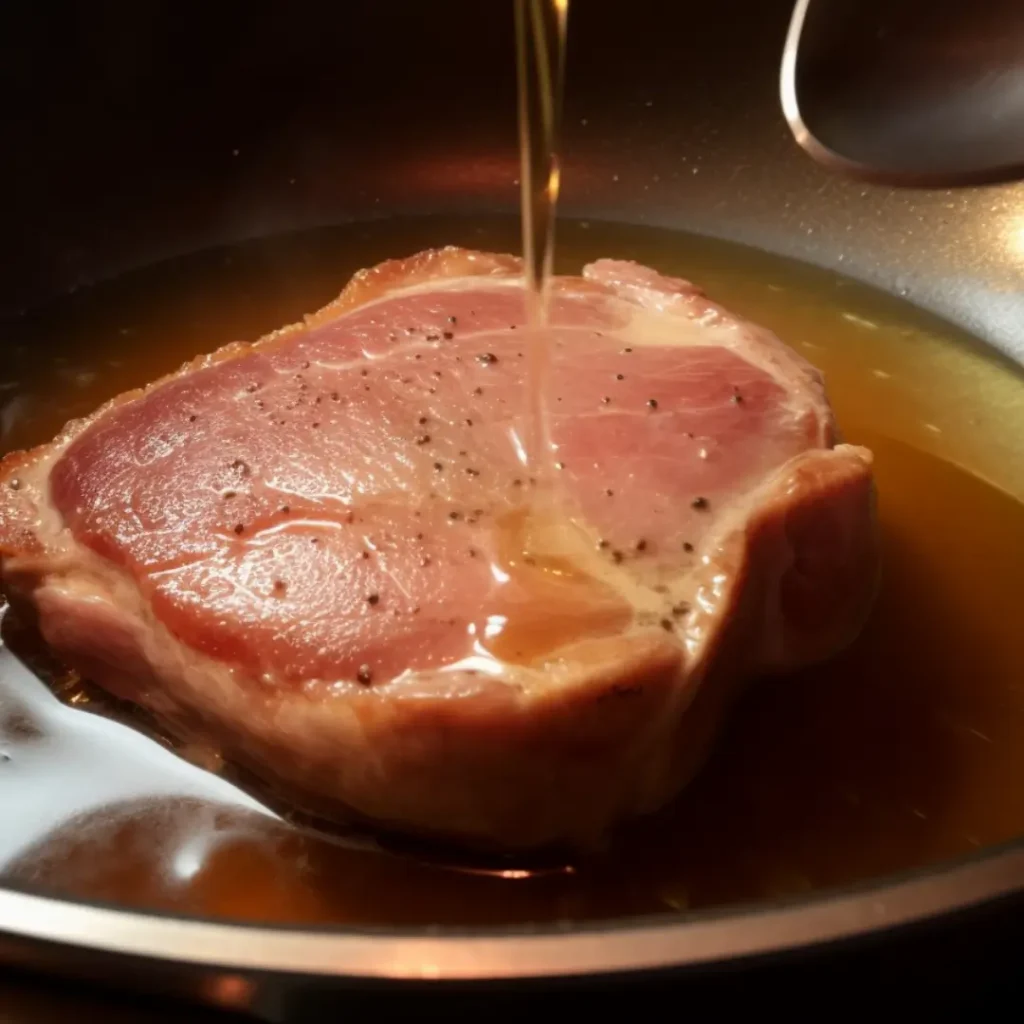
This same pan-searing method works like a dream with other proteins too. Check out these pan-seared poultry options similar to duck breast if you want to switch things up later in the week.
Up next, we’re tackling the common questions: storage, taste, reheating—and what to do with all that glorious duck fat.
Duck Breast Recipes: FAQ You Didn’t Know You Needed
So you’ve mastered the sear—but what about the rest of it? Let’s hit some of the most common questions people ask when they start diving into duck breast recipes.
Duck has a thick layer of fat under the skin—because ducks float, and that insulation keeps them warm. But don’t worry, we render most of that fat off while cooking. The result? Crispy skin and rich, juicy meat.
Not really. Duck is actually more like red meat in flavor—think a little closer to steak or lamb. It’s rich, savory, and full of umami. That’s thanks to its higher myoglobin levels (sciencey, but true).
Keep it in its original packaging in the fridge for up to 7 days, or freeze it for 6 months. Always check the use-by date if you’re unsure.
Low and slow is the key. Use a skillet on medium-low or pop it in a 300°F oven until just warmed through. Microwave? Only if you’re into rubbery sadness. (We’re not.)
Oh man—so much. Use it to roast potatoes, sauté veggies, or even fry eggs. Store it in the fridge for 6 months or freeze it for up to a year.
Looking for other lean protein options with bold flavor? These alternative poultry recipes similar to duck might be right up your alley.
Next up: we’re cooking—full recipe mode!
Duck Breast Recipes: Easy Pan-Seared Duck + Red Wine Sauce
This is the part where your kitchen starts smelling like a five-star bistro. We’re keeping things simple, but the results? Next-level. Whether you’re cooking for a crowd or just showing off to yourself, this one’s a keeper.
Pan-Seared Duck Breast
Ingredients (Serves 2):
- 2 boneless duck breasts (skin-on if possible)
- Kosher salt
- Freshly cracked black pepper
Instructions:
- Prep the Duck
Pat the duck dry with paper towels. Let it sit out at room temp for 20–30 minutes. Season both sides generously with salt and pepper. - Score the Skin
Using a sharp knife, score the skin in a diagonal pattern without cutting into the meat. Turn and score the opposite way to make diamonds. - Sear It Skin-Side Down
Place the duck breasts skin-side down in a cold skillet (no oil needed). Turn the heat to medium-low and let it cook for about 6–8 minutes. Spoon out excess fat as it renders. - Flip and Finish
Flip to the flesh side and cook for 2–4 minutes, depending on how thick the breasts are and your preferred doneness. Medium-rare = 130°F–140°F internal temp. - Rest, Slice, Serve
Remove from pan and let rest for 5 minutes. Slice thinly against the grain.
Craving even more buttery flavor? Check out other garlic-forward dishes like butter-seared duck breast for some tasty inspiration.
Optional Red Wine Sauce (but highly recommended)
Ingredients:
- 1 small shallot, minced
- 2 garlic cloves, minced
- ¾ cup dry red wine
- 1 tbsp balsamic vinegar
- 2 tbsp cold butter
- 1 tsp duck fat (from the pan)
Instructions:
- Sauté the Aromatics
In the same skillet, spoon out most of the fat—leave about a teaspoon. Sauté shallots and garlic over medium heat until soft and fragrant (about 2 minutes). - Deglaze with Wine & Vinegar
Add the wine and balsamic. Stir, scraping up any browned bits. Simmer until reduced by half (about 5–7 minutes). - Finish with Butter
Turn off the heat. Swirl in cold butter to make it glossy and rich. - Spoon Over Duck
Drizzle it right over those juicy slices. Instant elegance.
This combo also works with other proteins—give it a go next time you’re trying easy weeknight dinners beyond duck breast.
Print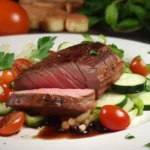
Duck Breast Recipes: Easy Pan-Seared Duck + Red Wine Sauce
- Total Time: 30 minutes
- Yield: 2 servings
Description
Perfectly pan-seared duck breast, juicy and crisped to golden perfection, served with an elegant red wine sauce—simple enough for a weeknight, special enough for a dinner party.
Ingredients
- 2 boneless duck breasts (skin-on if possible)
- Kosher salt
- Freshly cracked black pepper
- 1 small shallot, minced
- 2 garlic cloves, minced
- ¾ cup dry red wine
- 1 tbsp balsamic vinegar
- 2 tbsp cold butter
- 1 tsp duck fat (from the pan)
Instructions
- Pat the duck dry with paper towels and let sit at room temp for 20–30 minutes. Season both sides with salt and pepper.
- Score the skin in a diagonal crosshatch pattern with a sharp knife, avoiding the meat.
- Place duck skin-side down in a cold skillet (no oil). Turn heat to medium-low and cook for 6–8 minutes, spooning off excess fat.
- Flip and cook flesh side for 2–4 minutes, depending on thickness and preferred doneness (130–140°F for medium-rare).
- Remove from pan and rest for 5 minutes. Slice thinly against the grain.
- For the sauce, spoon off excess fat from skillet, leaving about 1 tsp.
- Sauté shallot and garlic over medium heat until soft (about 2 minutes).
- Add red wine and balsamic vinegar. Scrape up browned bits and simmer until reduced by half (5–7 minutes).
- Turn off heat and swirl in cold butter to finish the sauce.
- Spoon sauce over duck slices and serve.
Notes
Duck fat is liquid gold—save it for roasting potatoes or veggies. Letting the duck rest before slicing keeps it juicy and flavorful.
- Prep Time: 15 minutes
- Cook Time: 15 minutes
- Category: Main Course
- Method: Pan-Seared
- Cuisine: French-Inspired
Nutrition
- Serving Size: 1 duck breast with sauce
- Calories: 550
- Sugar: 2g
- Sodium: 420mg
- Fat: 38g
- Saturated Fat: 14g
- Unsaturated Fat: 22g
- Trans Fat: 0g
- Carbohydrates: 4g
- Fiber: 0g
- Protein: 45g
- Cholesterol: 160mg
Keywords: duck breast, pan-seared duck, red wine sauce, date night, elegant dinner
For more creative baking inspiration and marketing ideas, explore the Pinterest or connect with us on Facebook.
